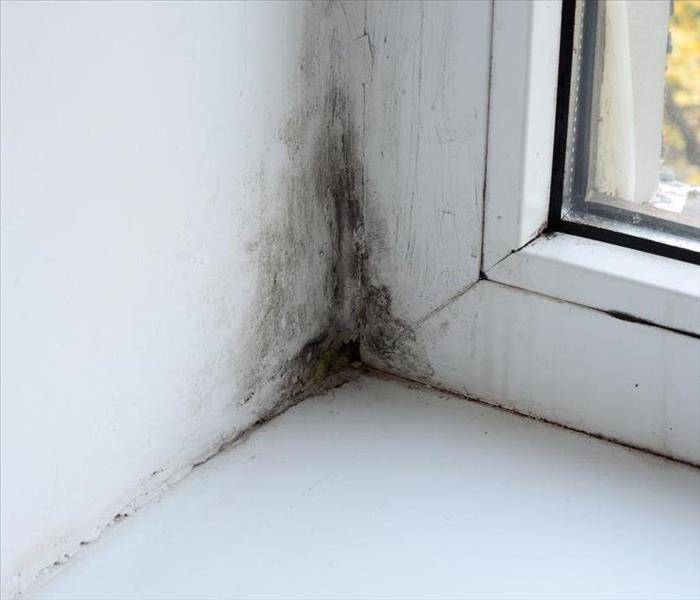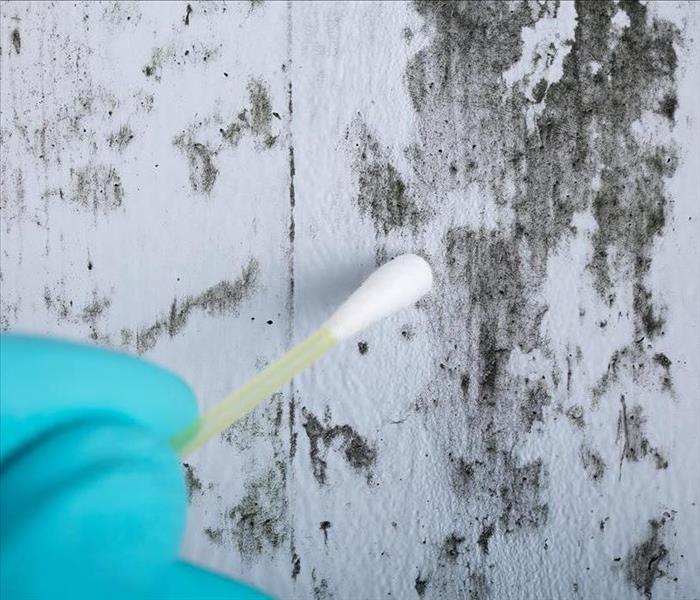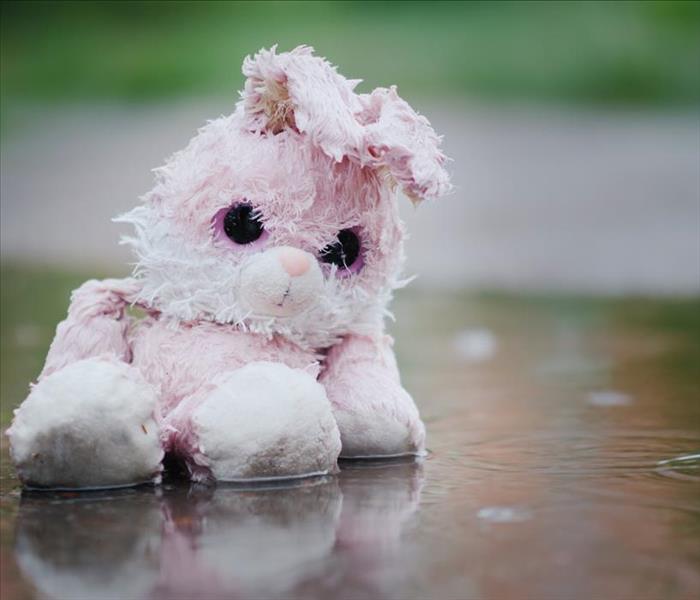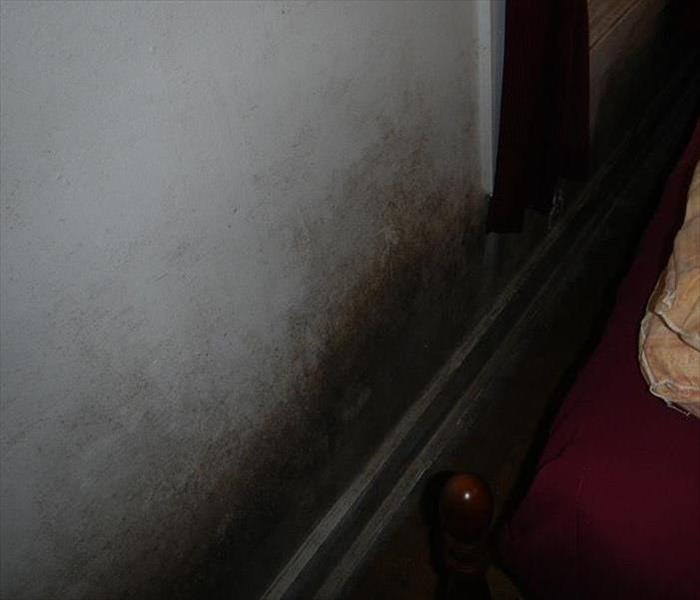Recent Mold Remediation Posts
4 Questions About Mold and Mildew
3/24/2022 (Permalink)
 Know more About Mold and Mildew and if you have more questions, just Contact us.
Know more About Mold and Mildew and if you have more questions, just Contact us.
It's a lot of fun to shop for a new home in New Bern, NC. Your "must have" list is long, and you know that you need to pay attention to the neighborhood, check the pipes under the sink, and actually read the home disclosures. Did you remember to look for mold and mildew? These words strike fear into the hearts of home buyers and sellers alike.
In order to look for signs of mold damage, it's important to know what these terms mean. Here are four questions you might have about mold and mildew.
1. What's the Difference Between Mold and Mildew?
Many people talk about mold and mildew in the same breath. While they are related, there are some key differences. Both are a type of fungus. Mold can grow up and is responsible for the fuzzy green spots on the loaf of bread that was left uneaten for too long. Mildew tends to stay flat. It's usually white and powdery and might be mistaken for dirt or dust. Mold can eat through materials such as drywall or ceiling tiles, causing structural problems. Mildew tends to spread outward and cover large areas but it doesn't have an impact on the structure of a home.
2. Why Do Mold and Mildew Happen?
Both mold and mildew grow in damp or wet environments. Think about areas of your home in which there's regularly a lot of moisture: the kitchen, the bathrooms, the basement. Mold and mildew form because the environment supports their growth. In a bathroom, for example, you might see mildew growth around the window frame. The dust on the window frame acts as food for the mildew spores and the water droplets from the shower and oxygen in the room support its growth.
Some molds and mildew thrive in a warm environment, like a bathroom or kitchen, and some prefer colder places like basements or outdoor crawl spaces. Excess moisture happens in bathrooms and kitchens due to steam. A leaking pipe or condensation building up on appliances can also trigger a fungus-friendly environment.
3. How Can Mold and Mildew Be Prevented?
In order to prevent mold growth, you have to remove or minimize the conditions that support their growth. For example, when you're cooking on the stove or running the shower, keep an exhaust fan going to prevent the buildup of moisture. In very damp areas, such as in the basement, run a dehumidifier. Position furniture appropriately to keep vents open so that air circulates.
4. What Are the Signs of Mold Damage?
Now that you know about mold and mildew, what do you need to keep an eye out for? First, a rotten or musty odor is a sure sign that there is an ongoing problem with mold growth. Walls or floors that look warped can be indicators that significant water damage occurred, giving mold the opportunity to form.
Consult with a mold remediation specialist to determine the extent of the problem before you make an offer on a home. When you know what mold and mildew are and what mold damage looks like, you can better assess the risks when visiting a home you hope to buy.
A Professional Mold Cleanup Response Is Crucial
9/21/2021 (Permalink)
 Fast mold cleanup is essential to avoid further damage in your New Bern, NC, property.
Fast mold cleanup is essential to avoid further damage in your New Bern, NC, property.
Containing mold spores is a big problem facing property owners who consider DIYing mold cleanup, and mistakes made at any point during the cleanup and remediation process could lead to more significant damage and increased damage control costs. Hiring New Bern, NC, professionals is the best way to put a stop to further growth and to avoid more repairs in the future.
Facts About Mold Cleanup
Mold containment is a vital part of the cleanup process because of the nature of mold. Microscopic spores are found in almost every natural environment and are easily transported indoors:
- Floating on air currents
- Carried on shoes and clothing
- Tracking in on pets
- Moving through doors and windows
- Pulled through heating and cooling systems
Once spores make their way into a new location, a little bit of moisture and organic food source (including fabric, cement, and dust) are all that's necessary to establish a new colony. Professionals take significant measures to avoid spreading mold contamination.
Mold Remediation
There are several steps involved in cleaning up existing mold growth and preventing new growth. Although each situation is unique and the cleanup details must be adapted, the cleanup process remains much the same:
- Inspection and damage assessment determines the extent and depth of the problem and to find damage that's out of sight.
- Containment often involves the use of plastic sheeting to seal off doors, windows, and hallways or negative air chambers.
- Removal of mold-damaged materials requires antifungal and antimicrobial supplies and treatments
- Proper disposal of affected materials is crucial to avoid further mold contamination.
- Air filtration requires powerful equipment, such as "air scrubbers," for both cleaning and containment.
- Cleanup involves the use of many techniques because of the variety of materials used in the contents and belongings of a commercial property. Carpets, furniture, and appliances must be cleaned. sanitized, and deodorized.
- Restoration could be a simple process or require a lot of new buildings depending on the level of damage.
Within each of these steps, professionals make adjustments to appropriately deal with the type of mold, the extent of the spread, and the severity of the damage.
A Closer Look at Personal Protection and Containment
Property cleanup, repair, and restoration professionals have access to specialized training, as well as equipment and supplies. Without these products, it is hard to be sure that mold cleanup has been thorough.
Hidden mold is a huge threat to commercial properties. If you've noticed a musty smell, but you can't find the mold, you could end up with very expensive damage. Experts may test surfaces and the air to determine whether there's an unseen colony and to measure how far the colony has spread.
Cleanup technicians understand how easily mold spores can travel from one location to another. Technicians protect themselves with personal protective equipment such as boots, gloves, goggles, and other clothing.
From identifying the source of the problem to preventing new growth, the right tools are crucial. Mold cleanup requires a professional response with specialized tools, thorough training, a deep understanding of mold, and plenty of containment and disinfection supplies.
Should Mold Damaged Belongings Be Cleaned or Thrown Away?
6/28/2021 (Permalink)
 Personal belongings with water damage.
Personal belongings with water damage.
Some of the things people own have a useful purpose. Others mostly have sentimental value. Some have a little bit of both. One of the most difficult decisions homeowners face after having mold cleaning done is whether to keep the mold-damaged property or throw it away.
What Property Should be Thrown Away or Kept After Mold Damage
Property That Should Be Thrown Away
If you hire a restoration company in New Bern, NC, it will try to save as much of your property as possible. However, some types of property will usually need to be thrown away because of mold damage:
- Items with porous surfaces
- Items with visible mold
- Items exposed to floodwater
Common items in these categories include carpet, cardboard, mattresses, stuffed animals and upholstered furniture. Most moldy paper products will also need to be discarded. However, some items with sentimental value, such as family photos, may be able to be saved by using a freeze-drying process.
Food that is moldy or has come in contact with floodwater should be thrown out. Most food preparation items will need to be discarded because the cost of mold cleaning often exceeds the cost of replacing the items.
Property That Can Be Saved
Items that are made from materials with a solid surface, such as glass, plastic or metal, usually can be saved with mold remediation. Most fabric clothing can be washed in your usual laundry detergent unless the fabric has been damaged. Leather items usually need professional cleaning.
A HEPA vacuum can be used to preserve clothing and paper materials that did not get wet and have no visible mold. Electronics and appliances that were exposed to mold, but were not underwater may be able to be saved.
Keeping an inventory of your personal belongings on hand can help you identify which items are particularly important to try to save after mold cleaning and which can be easily replaced. Talk to your insurance company before you make any final decisions to ensure they are willing to cover the cost.
Vacant homes can be breeding grounds for mold growth
9/6/2017 (Permalink)
Vacant homes can be breeding grounds for mold growth. Quite often we are called to a vacant home that is up for sale or the renter has moved out. The realtor/rental agent has come to show the home and finds mold growing on the walls. Mold can be seen growing most often in the upper wall locations, though it is not unusual to see growth at the lower wall levels as well. Closets that have been closed will quite often have the worst mold growth, partly because they are dark and mold loves the dark.
What could cause this? No broken water lines are found, the water is usually turned off to the home. Sometimes the HVAC system is off and that is the source of the problem. Having the heating and air turned off creates a high humidity level in the home. When the HVAC system is off there is no airflow circulating in the home therefore the air becomes stagnant. This is the perfect scenario for mold development.
Here are some tips on preventing mold issues in vacant homes:
- Always keep some heat and air running in the home. Set temperature so heat or air runs periodically during the day.
- Open closet doors to allow for airflow and light to enter.
- A ceiling fan left on low can help circulate the air in the home.
- Open window treatments/blinds at least ¼ open to allow in extra light. Remember, mold loves the dark.
- Visit the home occasionally. Just opening the doors and entering the structure allows for the exchange of fresh air and extra airflow. It’s also a great way to catch any issues before they become serious problems
If your home or business has a mold problem, we can inspect and assess your property and use our specialized training, equipment, and expertise to remediate your mold infestation.
If You See Signs of Mold, Call SERVPRO of Craven/Pamlico Counties Today – 252-637-7274
Craven and Pamlico County Residents: Follow These Mold Safety Tips If You Suspect Mold
3/13/2017 (Permalink)
 Be careful! Without proper training, you could be spreading mold throughout your home.
Be careful! Without proper training, you could be spreading mold throughout your home.
If you see visible mold, do not disturb it. You can inadvertently spread the mold infestation throughout your home. When mold is disturbed, the mold can release microscopic mold spores which become airborne and can circulate inside your home.
What to Do:
- Stay out of affected areas.
- Turn off the HVAC system and fans.
- Contact SERVPRO of Craven/Pamlico Counties for mold remediation services.
What Not to Do:
- Don’t touch or disturb the mold.
- Don’t blow air across any surfaces with visible or suspected mold growth.
- Don’t attempt to dry the area yourself.
- Don’t spray bleach or other disinfectants on the mold.
About Our Mold Remediation Services
SERVPRO of Craven/Pamlico Counties specializes in mold cleanup and restoration, in fact, it’s a cornerstone of our business. Our crews are highly trained restoration professionals that use specialized equipment and techniques to properly remediate your mold problem quickly and safely.
If You See Signs of Mold, Call Us Today – (252) 637-7274





 24/7 Emergency Service
24/7 Emergency Service


